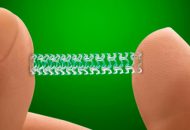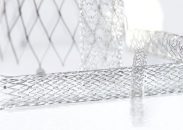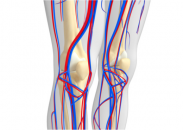The prevalence of peripheral arterial disease is between 15% and 20% of patients older than 65 years and its severity is greatly underestimated. In fact, annual mortality is higher in patients with peripheral arterial disease (8.2%) than in those after acute myocardial infarction (6.3%). Despite the above, medical advice and efforts to modify risk factors…
Critical ischemia in the lower limbs: Frequent Readmissions show the magnitude of this problem
Readmissions at 6 months in patients with critical ischemia in the lower limbs occur in about 50% of all cases and most of them are unplanned. This truly alarming number is cause for further concern when taking into account that only part of these readmissions are related to vascular problems. Many are caused by comorbidities…
Critical Limb Ischemia: Wound Blush Is the Most Important Objective
The aim of this study was to find the optimal angiographic endpoint for infrapopliteal interventions to be able to predict wound healing. Evidence shows acceptable patency and successful limb salvage in patients with critical limb ischemia after infrapopliteal intervention. However, the optimal angiographic endpoint remains unclear. Is it enough to restore flow in one…
Pedal Artery Angioplasty: Beneficial in Critical Limb Ischemia
Courtesy of Dr. Carlos Fava. Delaying or failing to heal trophic wounds in critical limb ischemia (CLI) changes quality of life, delays rehabilitation and is associated to infections and amputation. Pedal artery revascularization with angioplasty would speed up recovery and improve CLI wound healing. The study analyzed 257 patients with de novo infrapopliteal…
BVS: Safe and Effective in the Infrapatellar Area
Courtesy of Dr. Carlos Fava. Drug-eluting stents (DES) have shown mid-term benefit in lesions below the knee (BTK) by reducing the rate of acute occlusion and restenosis in type A and B lesions. However, failure to recover the self-regulatory functions of the local vessel could hinder future revascularization. Drug-eluting bioresorbable scaffolds (BVS) could be a solution to this problem.…
Angiosome: Is It Feasible in Critical Limb Ischemia?
Courtesy of Dr. Carlos Fava. Critical limb ischemia (CLI) accompanied by tissue loss entails high risk of amputation. At present, there is substantial evidence in favor of revascularization by PCI according to the angiosome concept, but the feasibility of this treatment remains unclear. 161 compromised limbs were analyzed in 160 patients with foot…
Drug coated balloons: Superior in infrapopliteal territory?
Original Title: Drug-Coated Balloons for Revascularization of Infrapopliteal Arteries. A Meta-Analysis of Randomized Trials. Reference: Salvatore Cassese et al. J Am Coll Cardiol Intv. 2016. Online before print. The aim of this study was to perform a meta-analyzis of the most relevant randomized trials on the use of drug coated balloons (DCBs) in…
DES in critical ischemia caused by infrapopliteal lesions
Original Title: Percutaneous Transluminal Angioplasty and Drug-Eluting Stents for Infrapopliteal Lesions in Critical Limb Ischemia (PADI) Trial. Reference: Marlon I. Spreen et al. Circ Cardiovasc Interv. 2016 Feb;9(2):e002376. The treatment of infrapopliteal lesions in patients with critical limb ischemia is limited by the high rates of restenosis. The most frequent course of treatment is…
Pedal arch patency, the challenge of critical limb ischemia
Original Title: Outcomes of Straight-Line Flow UIT and Without Pedal Arch in Patients UIT Critical Limb Ischemia. Reference: Akihiro Higashimori, et al. Catheterization and cardiovascular Intervention 2016;87:129-133 Courtesy of Dr. Carlos Fava. Establishing one straight line flow into a patent pedal arch in critical limb ischemia is a real challenge occasionally achieved. This study analyzed 137…
Balloon Angioplasty vs. Sirolimus Eluting Stenting in Infrapopliteal Territory
Original Title: Wound Healing Outcomes and Health-Related Quality-of-Life Changes in the ACHILLES Trial1-Year Results From a Prospective Randomized Controlled Trial of Infrapopliteal Balloon Angioplasty Versus Sirolimus-Eluting Stenting in Patients With Ischemic Peripheral Arterial Disease. Reference: Konstantinos Katsanos et al. J Am Coll Cardiol Intv. 2016, online before print. The ACHILLES study (Comparing Angioplasty and DES…
Atherectomy in Infrapopliteal Lesions with Good Results at One Year
Original Title: One-Year Outcomes Following Directional Atherectomy of Infrapopliteal Lesions: Subgroup Results of the Prospective, Multicenter DEFINITIVE LE Trial. Reference: Aljoscha Rastan, et al Journal Endovascular Therapy 2015;22:839-846 Courtesy of Dr. Carlos Fava Infrapopliteal peripheral vascular disease continues to rise, especially in patients with diabetes and kidney failure, usually presenting diffuse and fairly calcified lesions. Removing…










